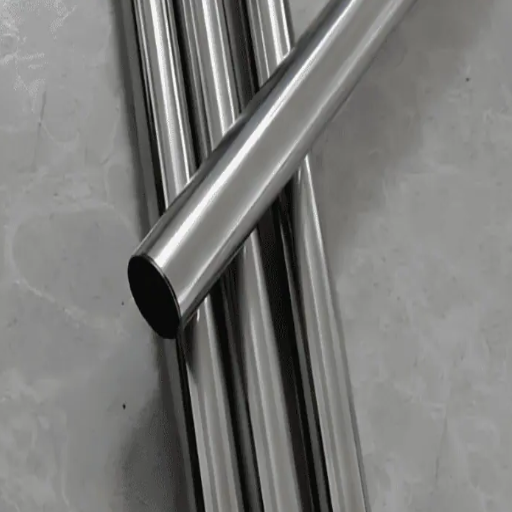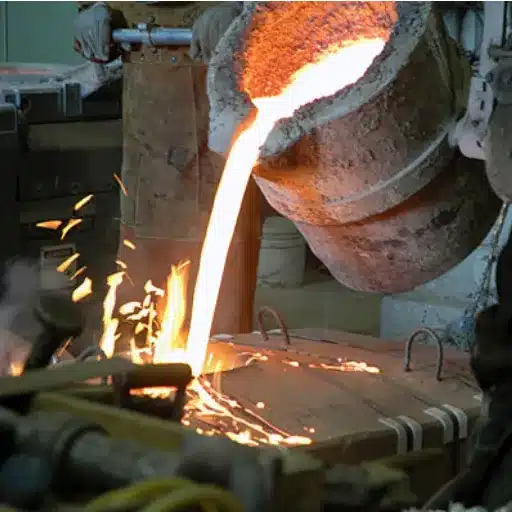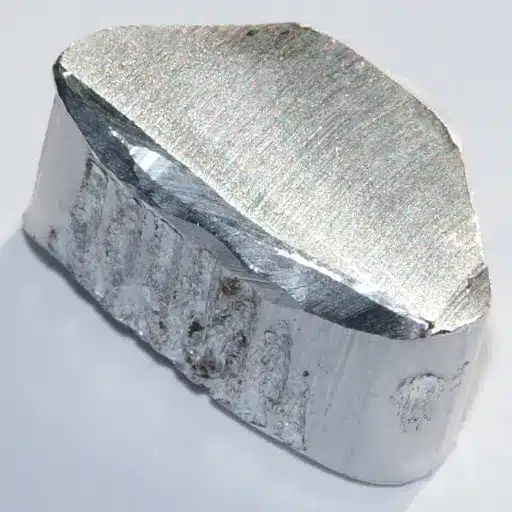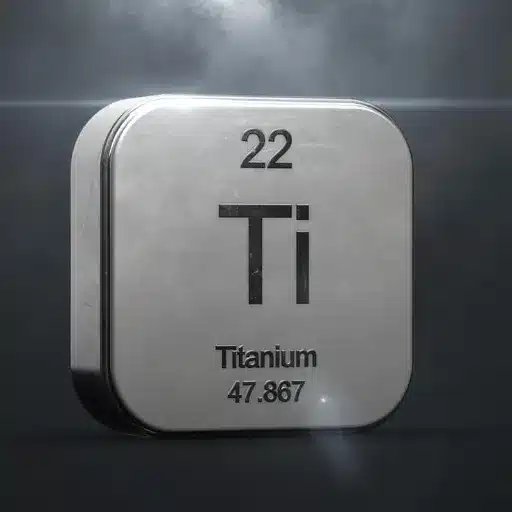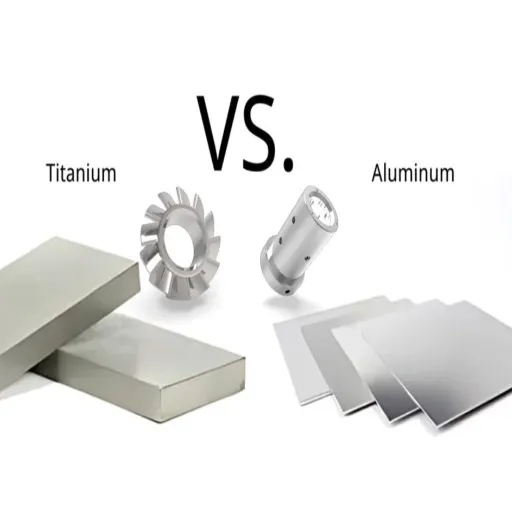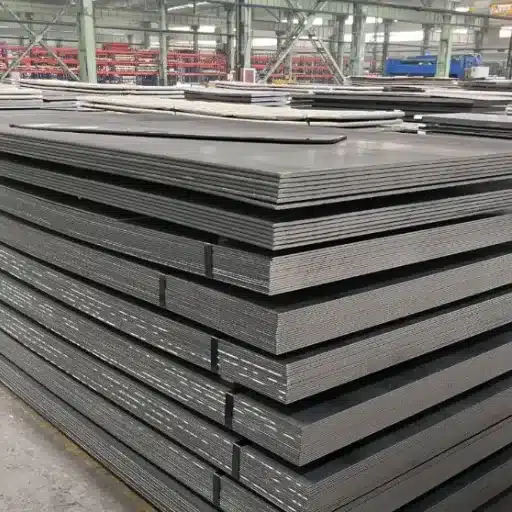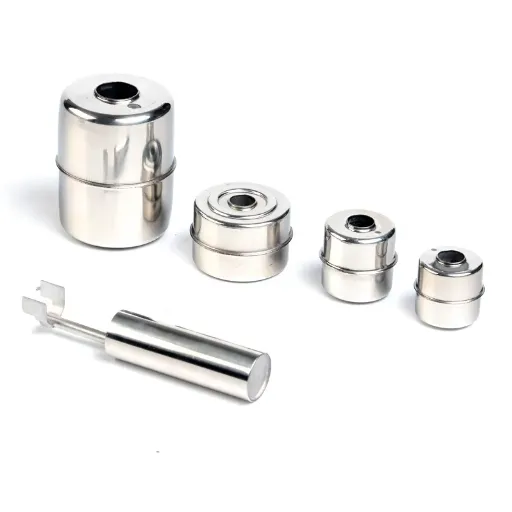When it comes to stainless steel grades, not all are created equal. Among the most commonly used types, 410 and 304 stainless steel stand out for their unique properties and applications. Whether you’re selecting materials for industrial equipment, kitchen appliances, or custom fabrication projects, understanding the distinctions between these two grades is essential. This article will provide an in-depth comparison of 410 and 304 stainless steel, exploring their chemical compositions, mechanical properties, and ideal use cases. By the end, you’ll have the technical insights needed to determine which material best suits your specific requirements.
What Are the Main Differences Between 410 and 304 Stainless Steel?
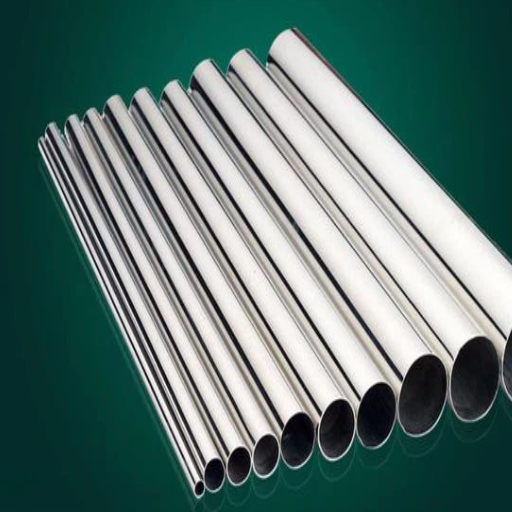
Understanding 304 and 410 Stainless Steel Composition
304 stainless steel is an austenitic alloy comprised largely of iron and has about 18% chromium and 8% nickel. The addition of chromium gives it excellent corrosion resistance, and nickel improves strength and toughness. Furthermore, this grade often contains traces of manganese and silicon, which improve the grade’s structural integrity.
The other side of the coin is 410 stainless steel which is a martensitic alloy containing about 11.5%-13.5% chromium with little to no nickel. 410 is far less resistant to corrosion compared to 304 due to the lower chromium content, but the martensitic structure allows for heat treatment to increase hardness and strength significantly. In addition to this, small quantities of carbon, around 0.08%-0.15%, also improve its mechanical performance.
The primary properties of these alloys differ due to composition, with 304 being optimal for areas that require corrosion resistance and ductility, while 410 performs better for wear resistance and higher tensile strength. Knowing these differences helps to select a material that would best fit the designed environment and operational conditions.
Comparing Corrosion Resistance in 304 and 410
In the comparison of the corrosion resistance of stainless steel grades 304 and 410, grade 304 is more resistant than grade 410 in oxygen and chemically hostile environments. Resisting corrosive environments, especially acidic or marine, is greatly enhanced by an austenitic stainless steel 304 due to a high chromium content of about 18-20% and nickel additions of 8-10.5%. The presence of a strong passive oxide layer would further enhance grade 304’s resistance, enabling it to fulfill food industry processing needs, chemical container applications, and other highly corrosive areas.
On the other hand, 410 martensitic stainless steel has a chromium content of about 11.5-13.5% with no nickel and lower corrosion resistance overall. Its moderate resistance does not hold up in enduring, moisture-laden chemical environments. A primary focus of 410’s metallurgy is on hardness and wear resistance, sacrificing some corrosive weakness, which enables its use in cutlery and industrial parts where it suffers less in these corrosive regions.
In conclusion, the decision for 304 and 410 in case of corrosion-sensitive applications must strongly consider the surrounding environmental factors. For intense and long-term exposure to corrosive agents such as chloride or acid, 304 remains superior due to its enhanced stability. However, if primary requirements are strength and resistance to wear with only a few corrosion-causing elements, then 410 could be regarded as adequate.
Examining Hardness and Durability of Each Grade
The differences in composition and mixed crystal system convexity of 304 and 410 stainless steel bring forth their distinct trade-offs, which must be taken into account about the hardness and durability of the two grades. Grade 410, being a martensitic stainless steel, has higher hardness due to greater carbon concentration, and is capable of heat treatment, exhibiting superior wear resistance. This makes it more appropriate in applications where mechanical strength and abrasion resistance are critical, such as in tools, cutlery, or valves.
On the other hand, 304 is an austenitic stainless steel, and as such, its hardness is not generally increased using heat treatment. Its microconstituents grant it greater ductility, making it much tougher. 304 does not crack under highly stressed loading, giving it an advantage in applications with cyclic impacts or pressure, like structural components or food-processing equipment. Although it is less hard than grade 410, its reliability in corrosive or extreme-evolving environmental conditions due to exceptional corrosion resistance is far greater than 410’s, outlasting 410 in hostile environments.
Deciding on the use of 304 or 410 requires a direct evaluation of the operational needs. Hardness and wear resistance should take priority first, 410, as long as the environment is moderately corrosive. On the other hand, 304 is the best option when abrasion resistance, toughness, and reliable protection in high-corrosion hostile environments are most critical. Knowing the application requirements is important to guarantee the right material will be selected to optimize performance over time.
Is 410 Stainless Steel Magnetic?
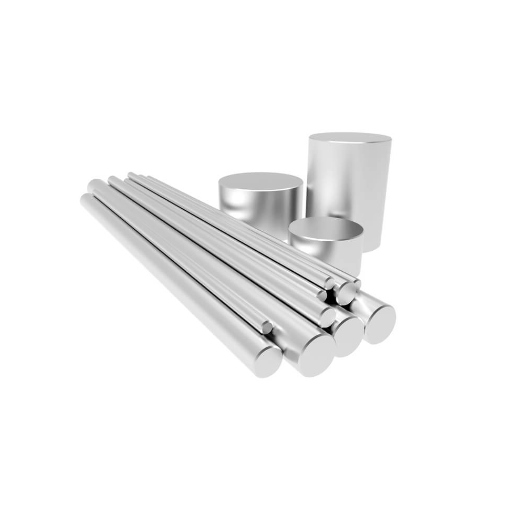
Exploring the Magnetic Properties of 410 Stainless Steel
The reason 410 stainless steel possesses magnetic characteristics is due to its ferritic microstructure with a high iron content. This material belongs to the 400 series of martensitic stainless steels, recognized for their varying degrees of magnetization. 410’s magnetic response is unique when compared with non-magnetic austenitic grades like 304 stainless steel.
Magnetism in 410 stainless steel is determined by the alloy’s chemical composition, along with the heat treatment it has been subjected to. The iron content, alongside a martensitic phase structure, enables this alloy to strongly respond to magnetic fields, making it useful for applications that benefit from magnetic properties. However, it is noteworthy that some processing conditions, such as annealing, can disrupt the crystalline structure of the alloy and residual stresses present, thus altering the magnetic properties.
Magnetism makes 410 stainless steel convenient for use as magnetic separators, industrial components, and tools where moderate corrosion resistance is tolerable. These characteristics of the material are critical for ensuring functionality under specific working conditions.
How Does 304 Stainless Steel Compare in Magnetism?
Unlike 410 stainless steel, 304 stainless steel is classified as austenitic, which completely alters its magnetic properties. The austenitic structure of 304 results from the chromium content, which is about 18%, and nickel, which is about 8%. These alloying elements make the face-centered cubic (FCC) crystalline structure of the steel stable, thus making it non-magnetic when annealed.
Cold working and heavy deformation are examples of processes that can induce martensitic local transformations, thus giving them magnetic tendencies. For instance, components cold-drawn or formed from 304 stainless steel may display weak magnetism, but this is usually inadequate for uses that expect strong magnetic features. Compared with ferritic or martensitic grades like 410, 304 exhibits much weaker magnetic susceptibility; its relative magnetic permeability is often near 1 without being modified by some processing.
With its non-magnetic characteristics, 304 stainless steel stands out in maintenance-free environments with minimal magnetic interference. Such performance, coupled with superb corrosion resistance and mechanical properties, renders it adaptable as electrical and precision instruments or enclosures, and some medical implements. For accurate assessments of magnetic behavior, the intended application environments for specific batch properties remain pivotal.
Why Choose 304 Stainless Steel for Your Project?
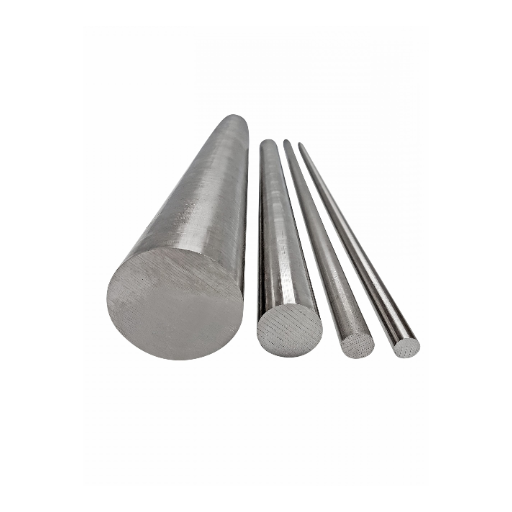
Benefits of Corrosion Resistance in 304
The outstanding corrosion resistance observed in 304 stainless steel is attributed to its exceptionally high chromium content (18-20%) and nickel (8-10.5%) alloying constituents. These elements form a passive protective chromium oxide layer 304 stainless steel surface, which prevents oxidation and material degradation in different environments. Therefore, it is highly resistant to damp conditions, exposure to a variety of chemicals, and even to weak acids such as organic or nitric acid.
Such resistance makes it useful in the food industry, shipbuilding, and in pharmaceutical industries, where cleanliness and lifespan of the material are of utmost importance. For example, in chloride-rich surroundings such as coastal structures, 304 stainless steel outlasts standard carbon steel in structural integrity, which translates to lower costs in maintenance and replacement in the long run.
Moreover, 304 stainless steel is known to withstand pitting and crevice corrosion in aqueous solutions at relatively high temperatures up to 200°F (93 °C). These features along with its appealing aesthetics and recyclability make 304 stainless steel one of the most relied on materials in the market.
Applications Requiring Superior Corrosion Resistance
304 stainless steel is essential for its applications that require high resistance to corrosion and long structural life. Its remarkable ability to resist pitting and crevice corrosion, particularly in damp and chemically hostile environments, makes it popular in the chemical processing industry. For example, it is often used for storage tanks, piping, and processing equipment that are subject to thermally cyclic acids and other corrosive chemicals because it provides safe industrial operation and long-term durability.
Another prominent use of 304 stainless steel is in the food and beverage sector. Its good resistance to corrosion by food acids such as citric and lactic acid makes it well suited for fabricating countertops, sinks, and fermentation tanks. Also, its non-reactive surface guarantees that any contaminants do not pose a risk to regulatory hygiene standards, making it a constant solution to cleanliness thresholds. Its heat resistance means it can be stabilized during thermal processing, which is a routine requirement in pasteurization and sterilization.
In the fabrication of fasteners, boat fittings, and valves in marine environments where components are constantly exposed to corrosive saltwater, 304 stainless steel is used. It is not necessarily the best option for heavy and prolonged concentration of a chloride environment, but it can withstand moderate saline conditions due to the chromium oxide film, which helps maintain structural integrity. Its lower cost compared to more specialized grades, alongside this adaptability, ensures its use across various maritime applications. The ability to maintain rough operational conditions underscores the material’s importance in applications that require exceptional corrosion resistance.
Comparing 304 vs 410 in Food Processing
In the context of stainless steel grades used in food processing, both 304 and 410 have distinct characteristics suitable for different uses. Austenitic grade 304 stainless steel is less popular than others because of its higher cost. It is regarded for its stronger resistance to corrosion due to the higher content of nickel, 8-10.5%, and chromium, 18-20%, compared to other grades. This composition provides good performance in acidic or high moisture environments, such as in the processing of dairy products or acidic vegetables. Moreover, 304 cannot be magnetized, and its remarkable formability allows manufacturers to fabricate seamless equipment like tanks and piping systems or kitchen surfaces.
On the other hand, grade 410 stainless steel, a martensitic alloy, is more applicable to situations where hardness and wear resistance are required rather than overall corrosion resistance. With lower chromium content 11.5-13.5% and no nickel, 410 gains strength through heat treatment, making it preferable for the manufacture of cutting tools, blades, or anything that comes into friction mechanically. However, 410 is less resistant to corrosion, which limits its use in the presence of harsh chemicals or highly acidic food products for prolonged durations.
The higher alloy content of 304 makes it more expensive than others, but its longevity in corrosive conditions offsets the investment costs. While 410 provides more affordable options for wear-intensive applications, the maintenance cost in a corrosive environment could nullify the initial savings. Therefore, the choice between 304 and 410 should be made based on the environmental factors, the amount of mechanical stress the part will endure, and the required lifespan of the components.
When Is 410 Stainless Steel the Better Option?
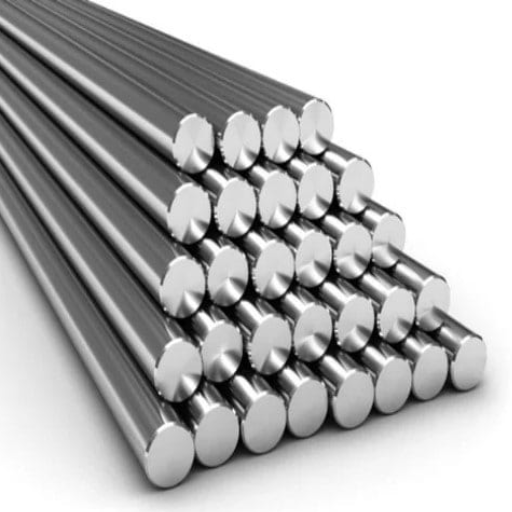
Situations Requiring High Hardness and Heat Treatment
The 410 stainless steel is effective where hardness, strength, and wear resistance are extremely important, like in components that undergo mechanical impact and abrasive wear. 410 stainless is capable of attaining a martensitic microstructure through heat treatment, greatly increasing hardness to over 40 HRC with some treatments. This phenomenon makes the steel particularly useful in the Tool, Cuting, Fastening, and Valve industries where tools need stamina against wear and fatigue.
Moreover 410 retains its shape well at high temperatures which is an advantage in high heat areas. For instance, 410 stainless steel is often utilized in components like turbine blades, petrochemical process equipment, and automotive parts such as exhaust systems. The material’s ability to withstand cyclic thermal loading with moderate corrosion resistance gives it an advantage over other steels in these harsh conditions.
Not all things are perfect though, for example 410 stainless requires protective coating or regular maintenance in badly corrosive atmospheres to lack support and have heat treatment.
Advantages of Wear Resistance in 410
The wear resistance of 410 stainless steel is advantageous in applications needing material durability and dependability. Its high carbon content promotes the development of martensitic microstructures during heat treatment, which increases hardness. Abrasive, erosive, or adhesive wear mechanisms cause more difficult surface damage in 410 stainless steel. It is ideal for machine parts enduring severe mechanical contact, such as shafts, ball bearings, and valves.
Furthermore, 410 stainless steel’s wear resistance allows for lower maintenance and downtime, improving long-term operational efficiency. Even slower performance rates can be remedied with optimized heat treatment processes that elevate surface hardness to 500 Brinell (HB). Such properties support the aerospace, automotive, and heavy manufacturing industries, which need materials with reliable mechanical endurance for high durability under stress.
Importantly, its moderate corrosion resistance prevents significant erosion in aggressive environments. The right choice of surface finish, further enhancements such as nitriding or coating, will increase both wear and corrosion resistance, broadening its demanding application range.
How Do 410 and 304 Stainless Steel Perform as Fasteners?
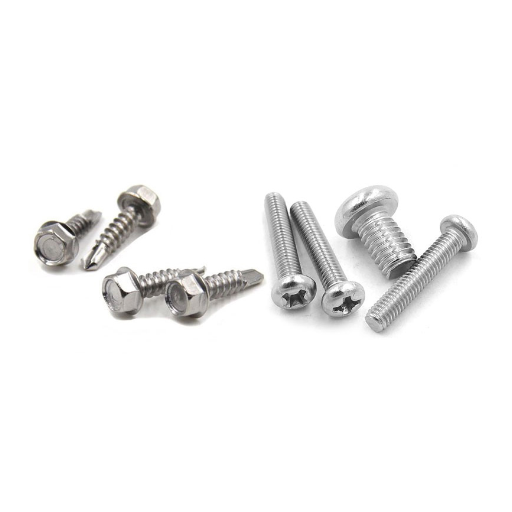
Strength and Durability of 410 Fasteners
Type 410 stainless steel fasteners are differentiated by their remarkable strength and hardness because of the martensitic microstructure created by the heat treatment processes. They have a tensile strength of 700 MPa to 900 MPa, and are thus appropriate for high-stress conditions with critical mechanical functionality. The material’s quenching and tempering capabilities provide improvements in yield strength while retaining toughness.
Of particular importance for 410 fasteners is the ability to withstand high-load wear deformation. This is helpful in environments where there is frequent mechanical engagement and high torque, such as automotive, aerospace, and industrial machinery. While 410 fasteners perform adequately in mildly corrosive conditions, they are better suited for environments where mechanical stability and toughness are of primary importance.
Comparatively, in other grade comparisons, 410 stainless steel is subpar due to it having lower impact resistance and higher carbon content, which decreases ductility. Even so, 410 fasteners are ideal for environments where moderate corrosion resistance and robust mechanical reliability are essential, while also being economical.
Corrosion Resistance of 304 Fasteners
The reputation of 304 stainless steel fasteners for having one of the highest corrosion resistance is fundamentally based on its chromium and nickel constituents. As is typical, 304 stainless steel contains about 18% chromium and 8% nickelwhich both oxidize to form a passive oxide layer that defends the stainless steel from oxidizing agents – in this case, oxidizing agents are oxidizing agents. This makes 304 fasteners particularly ideal for use in environments subjected to water, chemicals, and the atmosphere.
The unparalleled corrosion resistance of 304 fasteners also encompasses their ability to function in mildly acidic or alkaline environments. They do maintain corrosion resistance to some level of exposure to nitric acid, acetic acid, and sodium chloride. However, it is important to highlight that 304 fasteners become less efficient in highly chlorinated or saline environments, including marine applications, because of the risk of pitting corrosion. This problem is solved with the use of passivation treatments or by using 316 stainless steel, which endures harsher conditions.
In addition, 304 stainless steel fasteners have shown, through rigorous testing, to retain their structural integrity after enduring environmental factors such as sustained exposure to humidity and moderate temperature changes. This allows fasteners to be relied upon across numerous industries, for architectural constructions, or automotive uses.
References
-
Stainless Steel 304 vs. 410: Which Is Right for Your Project? – This source discusses the corrosion resistance and applications of both grades.
-
300 Series Stainless Steel vs 400 | 304 vs 410 | SFS USA – Offers insights into the cost, material properties, and differences between the two grades.
-
410 Stainless Steel vs 304: What’s the Difference? – Highlights the strength, heat resistance, and corrosion resistance of both materials.
Frequently Asked Questions (FAQ)
Q: What is the main difference between 410 stainless steel and 304 stainless steel?
A: The main difference between 304 and 410 stainless steel lies in their composition and properties. 304 stainless steel is an austenitic type of stainless steel with excellent corrosion resistance and is part of the 300 series. In contrast, 410 stainless steel is a martensitic type that can be hardened and is known for higher strength and hardness compared to 304.
Q: How does the corrosion resistance of 304 stainless steel compare to 410?
A: 304 stainless steel offers better corrosion resistance than 410 stainless steel. This is primarily due to the higher nickel content in 304, which makes it more resistant to corrosive environments. 410 stainless steel may not perform as well in environments where excellent corrosion resistance is crucial.
Q: In terms of durability and resistance, how does 410 stainless steel compare to 304?
A: 410 stainless steel is stronger and offers higher strength and hardness, making it suitable for applications requiring these properties. However, 304 stainless steel offers better overall durability and resistance to corrosion, making it ideal for environments where these qualities are essential.
Q: What applications are best suited for 410 stainless steel vs 304?
A: 410 stainless steel is often used in applications where high strength and wear resistance are needed, such as cutlery and tools. On the other hand, 304 stainless steel is commonly used in kitchen equipment, chemical containers, and architectural paneling due to its excellent corrosion resistance and versatility.
Q: Why might one choose 304 stainless steel over 410?
A: One might choose 304 stainless steel over 410 when superior corrosion resistance, ductility, and ease of fabrication are required. 304 is also preferred for its non-magnetic properties and is suitable for a wide range of applications compared to 410.
Q: Can 410 stainless steel be hardened?
A: Yes, 410 stainless steel is a martensitic type and can be hardened through heat treatment. This makes it an excellent choice for applications requiring high strength and wear resistance.
Q: Are there any drawbacks to using 410 stainless steel in corrosive environments?
A: While 410 stainless steel offers good strength, it does not provide the same level of corrosion resistance as 304 stainless steel. It is more susceptible to galvanic corrosion and may not be suitable for highly corrosive environments.
Q: How does the nickel content differ between 410 and 304 stainless steel?
A: 304 stainless steel typically has higher nickel content, which contributes to its excellent corrosion resistance and austenitic structure. In contrast, 410 stainless steel has lower nickel content, contributing to its ability to be hardened and its martensitic structure.
Q: What are the benefits of 304 and 316 stainless steel compared to 410?
A: Both 304 and 316 stainless steels offer better corrosion resistance compared to 410. 316 stainless steel, in particular, provides superior resistance to chlorides and chemicals due to its molybdenum content, making it ideal for more demanding environments.

